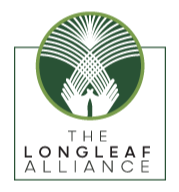Data and Maps Videos and Webinars
WLFW East Region Conservation Webinar Series: Northern Bobwhite Session #3 “Bobwhite in Ag Spaces”
Session 3 of the “Northern Bobwhite” mini-series was presented by Dr. Mark McConnell from Mississippi State University. This session focuses on the Northern Bobwhite Quail in agricultural landscapes. Topics covered include landscape changes driven by national trends, land sharing vs land sparing, socio-ecological systems and how to move towards better habitat, and opportunities for quail habitat in ag landscapes using profit margin and yield maps.
Webinar: From data to decision: Pathways for salt marsh conservation and restoration
Learn about conservation and restoration activities led by the Partnership for the Delaware Estuary that highlight the interactive nature of monitoring, tool development, and interventions to inform goal-based site management.
Geonode Part 3: GIS and Planning/ Energy Forcast Model
Part 3: GIS and Planning/ Energy Forcast Model
Introduction to LANDFIRE video series
Through a short series of videos, learn about LANDFIRE: a shared program between federal wildland fire management programs that provides landscape scale geospatial products to support cross-boundary planning, management, and operations. Use LF data for landscape assessment, modeling, analysis, and more.
Finding and Using Landowner Data - TELE Webinar
TELE (Tools for Engaging Landowners Effectively) shares insights on how practitioners can build upon and use landowner data to meet their needs and yours.
How To Use The LP Expertise Search
This video will introduce you to the Landscape Partnership Expertise Directory. The Expertise Directory is a searchable database that simplifies the process of identifying collaborators for research, funding, and projects. It provides users with access to nonprofit leaders, scientists, academics, conservation agency staff, farmers, and landowners. In this tutorial, you will learn how to: create your profile to showcase your own expertise, use the Profile and Map Search to find contacts for your projects, and export a spreadsheet of your search results.
Lucas Furman: The Longleaf Alliance & SE Fire Map
Lucas Furman is the GIS Coordinator at the Longleaf Alliance; in this role he also serves as a project liaison for the Southeast Fire Map. He shares about the importance of collaboration across stakeholder groups to develop good planning tools and serve all actors in a landscape.
Landscape-scale Conservation Planning
A basic overview of the principles and methods for the Appalachian Landscape Conservation Cooperative, including a discussion on the major goals of landscape conservation.
More Quail Per Bale: Precision Conservation for a More Sustainable Future
How farming and quail management can be compatible on working lands.
Video: Intro to the Landscape Partnership Workspaces
The Landscape Partnership workspaces provide online infrastructure and space for partners to share their expertise with one another, exchange resources and ideas, and plan work together on a certain species, a given habitat, or a specific project. Workspaces make it easier for partners to share expertise with one another. Any file type or file size can be shared and organized here online -- such as scientific studies, spatial data, images, podcasts, training modules, surveys, links, and videos.
SFE Webinar: Introduction to the SE FireMap 1.0 - A New Tool to Map Fires Across the South
The SE FireMap 1.0 is a new fire mapping system for the Southeastern United States. Developed with funding provided by the USDA NRCS, SE FireMap uses a remote sensing-based approach to track both prescribed fire and wildfire activity on public and private lands across the range of the longleaf pine.
Esri Web Services and PAD-US
Rich Nauman of Esri presents on how Esri web services have been applied to PAD-US data, creating many options for using PAD-US in web applications and on desktop GIS systems. Approximately 15 minutes.
The eDNAtlas and Archive for aquatic taxa in Western North America
The ease, efficiency, and sensitivity of environmental DNA (eDNA) sampling of species in aquatic environments is leading to an explosion in its use across North America.
Haywood Waterways Kids in the Creek
Kids in the Creek was created by the Tennessee Valley Authority and brought to Haywood County in 1997. The purpose is to expose 8th grade students to hands-on activities that raise awareness of the importance of clean water and the issues that could degrade water quality. The students rotate among four stations: the EnviroScape watershed model, water chemistry, fish, and benthic macroinvertebrates. At the fish station, the students collect data for a classroom exercise that ties everything together.
Tangible Landscape as a tool for modeling and science communication
In this webinar the Conservation Biology Institute introduce Tangible Landscape, a technology that links an interactive physical model with GRASS GIS through a real-time cycle of interaction, 3D scanning, geospatial computation, and 3D rendering.
LANDFIRE Data Applications for Research in Fire Ecology, Forest Mgmt in California
Brandon Collins presents the second in a series of webinars that LANDFIRE co-hosts with the California Fire Science Consortium. Collins is a USFS Research Forester based in Davis, CA, whose interests involve characterizing effects of fire and fuels treatments on forests at both the stand and landscape levels. He says, "My research intends to provide meaningful information to managers interested in improving forest resiliency and incorporating more natural fire-vegetation dynamics across landscapes."
Classification and Mapping of Cave and Karst Resources
Cave and karst systems are unique environments that occur throughout the Appalachians. They provide habitat for a diverse array of species and are an important source of domestic water supply for Appalachian communities. However, a lack of classification and mapping information on these ecosystems creates a significant barrier to conservation. In order to develop and deliver landscape-level planning tools, it is essential to develop an Appalachian-wide map depicting where cave and karst habitats and resources occur across the landscape. Researchers from an array of organizations were funded by the LCC to develop a series of deliverables, including data tables, geospatial information layers, and maps on these ecosystems.
Stream Classification System for the Appalachian Landscape Conservation Cooperative
Stream classification information is essential to develop and implement flow standards and water management recommendations that will sustain aquatic biodiversity. Unfortunately, standardized information was lacking for the Appalachian landscape. The goal of this project was to develop a state-based, consistent stream classification system for aquatic ecosystems in the region. Unifying state-based stream classifications into a single consistent system, principal investigators at The Nature Conservancy developed a hierarchical classification system and map for stream and river systems for the Appalachian LCC that represents the region’s natural flowing aquatic habitats.
Energy Forecast Mapping Tool Tutorial
This video presentation by Judy Dunscomb, Senior Conservation Scientist at The Nature Conservancy, provides a detailed overview of how to use the Energy Forecast Mapping Tool.
Assessing Future Energy Development
Assessing Future Energy Development across the Appalachian LCC uses models that combine data on energy development trends and identifies where these may intersect with important natural resource and ecosystem services to give a more comprehensive picture of what potential energy development could look like in the Appalachians. A web-based mapping tool allows policy makers, land management agencies, industries, and others to see where development may likely occur and intersect with important natural values to inform regional landscape planning decisions. Ultimately this information is intended to support dialogue and conservation on how to effectively avoid, minimize, and offset impacts from energy development to important natural areas and the valuable services they provide.
Data Needs Assessment Research Update
This presentation from Dr. Robert Baldwin of Clemson University provides an update to the Steering Committee on the Appalachian LCC funded research project. The Data Needs Assessment project is evaluating existing spatial data, assembling public data in geodatabase, defining conservation planning tasks that can be accomplished, identifying problems to address if data gaps are filled, interpreting uses of data, and conducting analysis of ongoing planning efforts.
Climate Webinar: Exploring Snowfall in the United States
The number of snowfall events in a given area has a large impact on road maintenance and water resources management. Snowfall data collected in the United States between 1930 and 2007 at seven locations shows how snowfall frequency has changed over time, and relates the information to a changing global climate.
GIS & Conservation Planning Portal Overview
Dr. Paul Leonard provides a general overview of the GIS & Conservation Planning section within the Appalachian LCC Web Portal.
NJ Landscape Project Training and Information Sessions
Designed to guide strategic wildlife habitat conservation, the Landscape Project is an interactive ecosystem-based mapping tool that assists government agencies, planners, conservation groups, the public and others in making decisions that will protect imperiled and special concern wildlife.
Conservation Planning Process
Conservation planning identifies and prioritizes lands that encompass important natural or cultural resources across the landscape (e.g., critical watersheds, habitat for rare or threatened species) and develops protection and management strategies for these lands. It is a process where science is at the core of planning, but the science is informed by groups of stakeholders using their on-the-ground knowledge and expertise. Dr. Robert Baldwin of Clemson University explains in this video the steps involved in the conservation planning process.
Habitat Assessment Models and Decision Support Tools for Aquatic Habitats
Fritz Boettner of Downstream Strategies presents on the North Atlantic LCC funded project to develop a decision support tool for an aquatic assessment of the Northeast. The presentation focuses on the development of a modeling methodology, process and outputs that came out of the modeling, and how stakeholders are needed for the project to be a success and develop quality assessment outputs.
Landscape-scale Conservation Planning
A basic overview of the principles and methods for the Appalachian Landscape Conservation Cooperative, including a discussion on the major goals of landscape conservation. Dr. Rob Baldwin, Professor, Clemson University


























